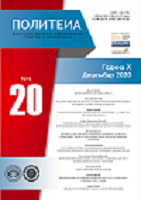(De)instrumentalizacija pušenja u savremenoj vizuelnoj kulturi na primjeru arhetipa buntovnika/buntovnice
(De)instrumentalization of smoking in modern visual arts on the example of the rebel archetype
Author(s): Nataša TešanovićSubject(s): Social Theory, Sociology of Culture, Film / Cinema / Cinematography, Social Norms / Social Control, Sociology of Politics, Sociology of Art
Published by: Fakultet političkih nauka Univerziteta u Banjoj Luci
Keywords: smoking; visual culture; marketing; liberation;
Summary/Abstract: The idea of ‘rebellion/disobedience as an immanence of freedom’ is a frequently used concept in storytelling strategies, whether art, marketing, or political activism. This idea can simultaneously or successively permeate all three areas, which is plastically demonstrated by the example of the rebel archetype. Originally used to advertise cigarette brands by celebrities, the archetype served as a means by which the tobacco industry reached new categories of consumers, who saw smoking as an act of liberation from social restraints and prejudices. By strengthening the so-called health agenda, and especially its use for political purposes, there are many bans on both direct consumption and advertising of cigarettes. Instead of directly promoting brands, the tobacco industry opts for indirectly mediating the act of smoking in visual culture, but this time with the use of narratives with a central rebel figure. By additional labeling and marginalization of smokers in public discourse, which often turns out to be a kind of act of political hypocrisy/screen for numerous undemocratic activities, smoking within the visual culture is increasingly presented as an act of rebellion, that is, a symbol of the struggle against political correctness and law-washed repression. In that context, through the historical presentation of the use of the rebel archetype in visual culture, mainly in movies and TV series, that is, through a descriptive-analytical approach to selected figures of smokers-rebels, within this research we will consider the decades-long symbiosis of the tobacco industry and marketing strategies of storytelling, as well as subversive artistic practices that oppose them. The results of the undertaken research indicate that the (de) instrumentalization of smoking in contemporary visual culture turns out to be a very current topic that pretends to anticipate cultural trends in a way and in ranges that go beyond the act of smoking and its direct implications.
Journal: Politeia - Naučni časopis Fakulteta političkih nauka u Banjoj Luci za društvena pitanja
- Issue Year: 12/2022
- Issue No: 23
- Page Range: 97-110
- Page Count: 14
- Language: Bosnian, Croatian, Serbian

